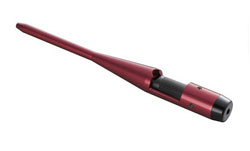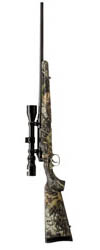So it’s early November and all over the country hunters are in the fields stalking that buck of a lifetime. The cool air has arrived, leaves are falling, and some areas of the country already have snow. Rifle season has already begun in some areas, and in others the opening of the rifle season is fast approaching.
One of the most important things a hunter or sport shooter must do is make sure that their rifle is zeroed. The need for zeroing goes for shooters using iron sights, scopes or other optics. Iron sights and red dot optics are their own animals, so I want to focus in on shooters using scoped rifles.
Something I realized recently is that many shooters aren’t aware of the easiest and quickest way to zero in their scoped rifle. Particularly if you have just had the scope mounted to that rifle. Some people think that having a rifle “bore†sighted is sufficient to make the rifle shoot on target.
For those who don’t know, “bore†sighting involves using a mechanical device, such as a laser bore sight, that is inserted into the muzzle end of the barrel with a targeting object that rests above the barrel in view of the objective lens of the scope. Many “bore†sights have a grid pattern. Once properly inserted the shooter looks through the scope as if they were preparing to shoot. The crosshairs of the scope appear on the grid, and the shooter adjusts the crosshairs until they are centered.
In many cases “bore†sighting will do a good job of getting your rifle to shoot in the general area of your point of aim. However, I have found that only relying on “bore†sighting alone can cause a shooter to have a very frustrating day shooting. It’s bad enough at the range, but missing that trophy buck because of an non-zeroed rifle is terrible.

I have found some “bore†sighted rifles off target (point of aim) by as much as six inches at 100 yards! It all depends on the bore sight used, the rifle, and who did the sighting. All this could easily translate into a missed buck, or a day of frustration at the target range.  The only way to ensure that your rifle is zeroed (point of impact = point of aim) is to get out and shoot!
Getting ready for rifle season this year, I went out with a friend to check our rifles and make sure they were zeroed and ready to hunt. My friend had a new rifle and scope, but I was just checking out my two hunting rifles for assurance.
Every hunter or shooter should check the zero of their rifles on occasion just to ensure that the scope was not bumped or some other type of interference has thrown the zero off. Thankfully my rifles only needed very minor adjustments and they are ready for this season.
My friend’s first shot with his new rifle and new scope was about 8 inches low and 4 inches to the right. This scope needed a major adjustment! We have both seen other shooters spend hours making adjustments to their scope, shooting, making more adjustments and so on, and still not having a truly zeroed rifle.
The easiest way to zero a new scope is to determine where yours is shooting. In my friend’s example his rifle was shooting down and to the right. Both of us are trained snipers so we could have done the math and started figuring out how many MOA adjustments needed to be made to get the rifle to hit dead on.
Most shooters, however, are not familiar with MOA, or are still uncertain about their skills in making the proper adjustments. Most shooters only want to touch the turrets on their scope one time, get it zeroed, and then never mess with them again. That’s great until you bump your rifle in the woods, and are now unsure of your scope.
Instead of guessing on adjustments until your shots are “O.K.†try this method and see how quickly your shots will be on target. My friend fired another shot (aimed at the bull’s eye) to ensure that both were hitting in the same area. We confirmed that his rifle was hitting 8†low and 4†to the right of point of aim – the center bull’s eye.
To best accomplish this zeroing process the rifle needs to be as secured and steady as possible. His rifle was on a Caldwell Lead Sled that was positioned on a shooting bench that kept it in place. My friend maintained his sight through the scope and readjusted his aim from the bull’s eye (point of aim) to the point of impact (where the two errant rounds actually hit).
Once he was “on target†at the point of actual impact I began adjusting the scope elevation and windage turrets accordingly (up and to the left). My friend kept a steady sight through the scope and actually watched the crosshairs move from the point of impact (down and right) to the bull’s eye (original point of aim).
Once that was done my friend fired again and was only 2†off to the left and slightly down from the bull’s eye at 100 yards! Now we made some minor MOA adjustments and within 5 total shots my friend was placing rounds in the bull’s eye! Yes, he’s a trained sniper, but this technique saved time, and perhaps more importantly – expensive ammunition.
One last thing to consider is that different ammunition loads perform differently – sometimes vastly different! If it weren’t so, there wouldn’t be so many ammunition manufacturers.
When you have your rifle close to zero make sure that you finish by firing the actual ammunition that you are going to hunt or shoot with. Adjust your scope to match that ammunition’s performance and then DON’T switch ammunition. If you have to switch, or decide to switch, get back to the target range and learn how the new ammunition will perform. In some cases the difference will be slight, in others it will be dramatic.
Happy hunting and shooting!
